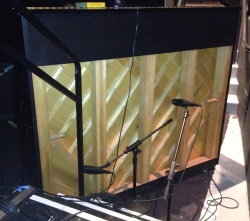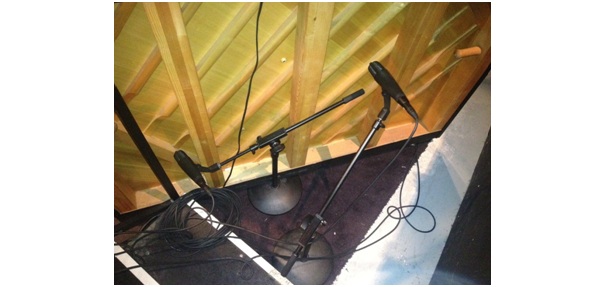Micing an upright piano is definitely one of the more difficult tasks required of a sound tech/engineer.
Over the years I’ve tried numerous different techniques trying to get that “big, warm” piano sound.
On most of these occasions, it was in a live rock/pop situation, where the only choice is to get the mics as close to the piano as possible to keep stage bleed to a minimum.
But recently I was asked to do front of house for a local production of The Music Man. I hadn’t done a theatrical gig in almost 20 years, bit it seemed like a fun challenge seemed fun—and my entire family was in the cast.
At the first full rehearsal, I was quickly reminded that live theater can be very challenging (I’ll write more about this topic soon).
Here, however, I want to focus on mic’ing the upright piano, and this was within the context of a pit orchestra to accompany the show.
The orchestra was typical for a musical of this size, with an assortment of strings, wind, brass and percussion. As I sized up what mics to use, and where to place them, I listened carefully to both the sound of the piano as well as the potential for bleed.
Walking around the piano and taking it in, I really liked what I was hearing from the sound board of the instrument. It had a warm yet very defined sound. After a while, I determined that mic’ing on the back side of the piano, fairly close to the sound board, would be a winning approach.
Thankfully, the venue offered a great selection of microphones! I quickly grabbed a pair that I know really well, and that I’ve used successfully in the past for piano applications: Sennheiser MD421s.
Because the house system was a true left/center/right configuration, I decided to set up the 421s in a stereo configuration. I placed one on the lower left side of the sound board as you looked at it, while the other was favoring the upper right side. Both mics were about 10 inches from the sound board.
Here’s how it looked:
When I went to EQ, I decided to set roll-off switch at the mid position for the MD421 located upper right, while I turned off the roll-off switch for the MD421 at lower left.
I started with the mics panned hard left and right, but eased that back on that a little as I listened.
This strategy ended up working out very well sonically, while orchestra bleed was minimal. A win-win.
Of course, there are a lot of different ways to successfully mic an upright piano. This technique worked great for my situation, but as well all mic applications, be sure to experiment to find out what works best for your specific needs and goals.
Gary Zandstra is a professional AV systems integrator with Parkway Electric and has been involved with sound at his church for more than 25 years.



















